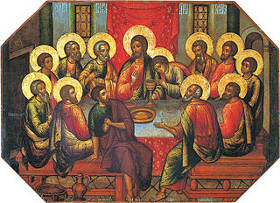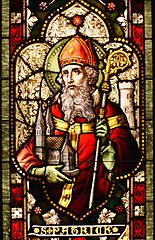Should holy men and women be revered and seen as a conduit to God, or are they polytheistic distractions that turn Christians away from the divine? The function of the holy dead remains divisive even in today’s Christian denominations.
In Why Can the Dead Do Such Great Things?, Robert Bartlett explains the social functions and cultural attitudes toward the cult of the saints in pre-modern Europe. In this lengthy book, Bartlett explains various aspects of the cult of the saints as well as the tensions Christians felt about the cult.
The book is divided into two parts. In “Part One: Developments,” Bartlett provides the context necessary to understand the analysis found in part two. In chapter one he explains the role of martyrs in the early Church and the rise of asceticism after the legalization of Christianity made martyrdom difficult. He continues this thread in chapter two, explaining how monasticism—born out of the ascetic practices of late antiquity—during the early middle ages spread the cult of the saints and provided new models in the form of the holy abbot.

Bartlett next moves into a discussion of the changes to the cult of the saints in the later middle ages, emphasizing the papacy’s consolidation of the power to canonize saints. Finally, in chapter four Bartlett explains some of the ways in which the Protestant Reformation dealt with the holy dead, noting that while attitudes toward the saints were far from the only issue, they were an obvious denominational marker.
“Part Two: Dynamics” comprises the bulk of the book. In chapters five through seven, Bartlett explains the nature of the cult as well as the people who were revered as holy. He identifies three key elements of the cult of the saints: the “recognition of the name and day of the saint; the special treatment of the saint’s bodily remains; and the celebration of the saint in writing” (95).
Bartlett goes on to discuss those revered on feast days, noting that the majority of saints were males of Italian origin. Furthermore, the martyrs were considered as elite among the saints, although the evidence does not suggest that their cults were any different in nature from those of other saints, the “confessors” (184-5).
Next, Bartlett moves from the general reverence paid to the saints to the specific ways in which Christians honored their holy dead, namely through relics and shrines, stories of miracles, pilgrimages, and dedicatory names. Relics and the shrines associated with them initially began with small churches built over the tombs of the martyrs, but in time relics of all types of saints were accumulated by churches in every corner of Europe. Related to relics are miracles, which were often said to result from devotion paid to a saint’s remains.
Bartlett covers a wide variety of miraculous events, including healing, supernatural occurrences such as levitation or the reception of the stigmata, or even the infliction of punishments. Pilgrimages to relics and shrines were another example of devotion paid to the saints, though the motivations of some pilgrims were not strictly spiritual, and he compares the practice with modern tourism. In chapter eleven, he closes this discussion of specific devotional acts with an examination of naming practices, noting that the saints were increasingly used in the names of churches, towns, and individuals over the course of the medieval period.
Two chapters on the imagery and literature surrounding the saints explain the final of the three key elements of the cult. He explains the specific iconography of the saints, such as halos (Judas is without in the picture above), as well as the visual cues that could identify a particular saint for the illiterate. In chapter thirteen Bartlett discusses actual literature about the saints. Hagiography was written both to celebrate the saints and to provide pious Christians with examples. In practice, however, saints were seen more often as patrons than as models, he argues. Bartlett moves beyond hagiography to discuss sermons about the saints as well as official documents surrounding a saint’s canonization.

Bartlett closes with a brief chapter on the criticisms leveled against the cult of the saints, both from older religions as well as heretical Christian sects, and finally a chapter comparing the Christian cult of the saints with similar elements of other religions, such as the pagan cult of heroes and the tomb-shrines of Jews and Muslims. Ultimately, he concludes that the differences outweigh any similarities.
Throughout this book Bartlett does an admirable job of explaining the various facets of Christian devotion to the holy dead prior to the Reformation. The evidence he provides is primarily textual in nature, along with some archaeology as appropriate. Bartlett is also to be commended in including statistics regarding the numbers of saints canonized in different periods and the types of miracles that were performed. He clearly has read extensively on the topic at hand; his bibliography is extensive—ninety pages—and the examples that he cites are varied in both place and time.
Though the book has many strengths, Bartlett could have included some discussion of his methodology. For example, he might have explained how he interprets reports of miracles. The closest he comes to this is in chapter nine when he writes, “Either these miracles really took place or the witnesses who reported them were deeply misled by their own senses” (375). This statement requires more explanation about how Bartlett reads his texts, or at least a discussion of what societal factors may have allowed people to be so “deeply misled.”
Long though it is, Why Can the Dead Do Such Great Things is an excellent survey of the cult of the saints in the pre-modern period. The reader looking for explanations of the social and cultural functions of the holy dead could do far worse.
